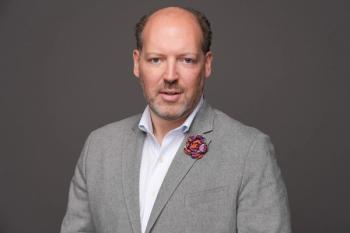
Psychiatry’s New Brain-Mind and the Legend of the “Chemical Imbalance”
The legend of the “chemical imbalance” should be consigned to the dust-bin of ill-informed and malicious caricatures.
“Everything should be made as simple as possible, but no simpler.”
-attributed to Albert Einstein (probably a paraphrase)
“Mind and body do not act upon each other, because they are not other, they are one.”
-Philosopher Will Durant, on Spinoza’s monism1
I am not one who easily loses his temper, but I confess to experiencing markedly increased limbic activity whenever I hear someone proclaim, “Psychiatrists think all mental disorders are due to a chemical imbalance!” In the past 30 years, I don’t believe I have ever heard a knowledgeable, well-trained psychiatrist make such a preposterous claim, except perhaps to mock it. On the other hand, the “chemical imbalance” trope has been tossed around a great deal by opponents of psychiatry, who mendaciously attribute the phrase to psychiatrists themselves.2 And, yes-the “chemical imbalance” image has been vigorously promoted by some pharmaceutical companies, often to the detriment of our patients’ understanding.3 In truth, the “chemical imbalance” notion was always a kind of urban legend- - never a theory seriously propounded by well-informed psychiatrists.
Fortunately, recent advances in cognitive psychology and neuroscience are now converging, with the result that psychiatry may be on the brink of a unified model of so-called mental illness. (The term itself, as we shall see, is belied by the new research). As described at the APA’s 2011 annual meeting by NIMH Director Thomas Insel, MD, neuropsychiatric research is pointing to a complex interplay between factors traditionally dichotomized as “biological” and “psychosocial”.4
As Insel describes the new model, conditions such as schizophrenia or bipolar disorder are attributable to rare, but highly potent, genetic variations that lead to dysfunction in multiple, complex brain circuits. However, the particular symptomatic manifestations in a given individual--the disease phenotype-is partly dependent on the person’s experiences and environment. We may hypothesize (and this is my view, not necessarily Dr. Insel’s) that given developmentally-based “biases” in various neurocircuits, the young boy or girl may be predisposed to the use of certain dysfunctional cognitive strategies; for example, viewing everyone in the environment as uniformly threatening or “rejecting.” These tendencies could easily be exacerbated by, say, childhood traumata or parental neglect.
We can imagine that the “irrational cognitions” so prized by cognitive therapists may develop on this abnormal, biogenetic substrate, and eventually become woven into the very fabric of the individual’s personality and world-view. Thus, rather than remain ensnared by the terms “mind” or “brain”, we would be better served by what Dr. Dan Stein calls, the “brain-mind.” Indeed, “…the two constructs are, in fact, impossible to disentangle.”5 This is essentially what the philosopher Baruch Spinoza (1632-1677) argued more than three centuries ago: “mind” and “brain” are not two substances, but one-variously understood in “mental” terms for some purposes, and in “physical” terms, for others. And, as Dr. Stein observes, the brain-mind “. . .is not a computational, apart-from-the-world, passive reflector, but rather a thinking-feeling-actor-in-the-world…"5
In short, we cannot afford to view our patients’ afflictions in the balkanized terms of “mental” vs. “physical”, “mind” vs. “body”, “psyche” vs. “soma”. Neither can we afford the luxury of supposing that only one type of treatment-medication or psychotherapy-will be effective for the illnesses we treat. On the contrary, the best available evidence suggests that each modality, or their synergistic combination, may be effective-depending on the specific illness. To be sure, as my colleague, Nassir Ghaemi MD, has cautioned, we must not be drawn into a haze of promiscuous eclecticism in our treatment; rather, we must be guided by well-designed studies and the best available evidence.6 Nonetheless, there is room in our work for both motives and molecules, poetry and pharmacology. The legend of the “chemical imbalance” should be consigned to the dust-bin of ill-informed and malicious caricatures. Psychiatry must now confront the mysteries and miseries of the brain-mind.
References:
1. Durant W. The Story of Philosophy. New York: Pocket Books;1953.
2. See, eg, “The cornerstone of psychiatry’s disease model today is the theory that a brain-based, chemical imbalance causes mental illness.”
3. Lacasse JR, Leo J. Serotonin and Depression: A Disconnect between the Advertisements and the Scientific Literature. PLoS Med. 2005; 2(12): e392. doi:10.1371/journal.pmed.0020392
4. Moran M. Brain, Gene Discoveries Drive New Concept of Mental Illness. Psychiatric News. June 17, 2011.
5. Stein DJ. Philosophy of Psychopharmacology. Cambridge: Cambridge University Press; 2008: x.
6. Ghaemi SN. The Rise and Fall of the Biopsychosocial Model: Reconciling Art and Science in Psychiatry. Baltimore: Johns Hopkins University Press; 2009.
Newsletter
Receive trusted psychiatric news, expert analysis, and clinical insights — subscribe today to support your practice and your patients.














